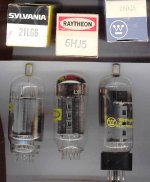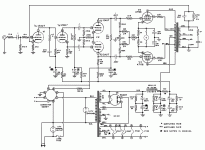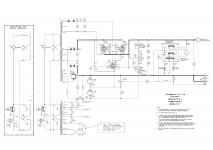Hi all,
Tube novice here! I recently snapped up a collection of small signal tubes for not so much, sight unseen. Now I bought them with a view to building (and blowing) up a few projects so I can have a play and learn more about load lines and simple tube builds. I'm thinking a few line amps might be in order, as I haven't a budget for tons of transformers, and I've a few old/odd bits I can press into service.
That said, it's quite the smorgasbord so if any kind souls are keen to lend their expertise as to 'good' parts for audio, I'd be glad to get a starting point.
Tubes (mid size)
6au4gta * 1
ib3gt * 1
6AL5 * 1
6A9 * 1
6AH6 * 1
6BN8 *2
6BA6 * 1
6BQ7A * 1
6BL8 * 2
6CH6 * 2
6CM7 *1
6BX6 * 1
6GK5 * 1
6W2 * 1
1X2B * 1
6em7 * 2
6ch6 * 2
6c08 *2
efl200 (6Y9?) x 2
6Gk5 * 1
Jan7193 * 1
(smaller size)
3gk5 * 2
6al5 *3
6bl8 * 6
6bq7a * 6
6bz6 * 2
6cb6 * 6
6cb6a * 5
6cw7 * 1
6cs6 * 1
6cq8 * 1
6es8 * 3
6ea8 * 4
6ec7 * 1
6Ew6 * 1
6HG8 * 5
6U9 * 2
6uUA * 1
6V9 * 2
6JW8 * 1
6BZ6 * 2
Tube novice here! I recently snapped up a collection of small signal tubes for not so much, sight unseen. Now I bought them with a view to building (and blowing) up a few projects so I can have a play and learn more about load lines and simple tube builds. I'm thinking a few line amps might be in order, as I haven't a budget for tons of transformers, and I've a few old/odd bits I can press into service.
That said, it's quite the smorgasbord so if any kind souls are keen to lend their expertise as to 'good' parts for audio, I'd be glad to get a starting point.
Tubes (mid size)
6au4gta * 1
ib3gt * 1
6AL5 * 1
6A9 * 1
6AH6 * 1
6BN8 *2
6BA6 * 1
6BQ7A * 1
6BL8 * 2
6CH6 * 2
6CM7 *1
6BX6 * 1
6GK5 * 1
6W2 * 1
1X2B * 1
6em7 * 2
6ch6 * 2
6c08 *2
efl200 (6Y9?) x 2
6Gk5 * 1
Jan7193 * 1
(smaller size)
3gk5 * 2
6al5 *3
6bl8 * 6
6bq7a * 6
6bz6 * 2
6cb6 * 6
6cb6a * 5
6cw7 * 1
6cs6 * 1
6cq8 * 1
6es8 * 3
6ea8 * 4
6ec7 * 1
6Ew6 * 1
6HG8 * 5
6U9 * 2
6uUA * 1
6V9 * 2
6JW8 * 1
6BZ6 * 2
You could make a nice spud amp with the two 6EM7's
Hi there! Noted. What sort of output transformer impedance would that require? Sourcing amp output transfo's is an expensive proposition down this way!
Likely solutions http://www.ozvalveamps.org/optrans.htm
Last edited:
6CH6 can be used as an audio output.
Much of what you have could be used to make a nice radio receiver.
Much of what you have could be used to make a nice radio receiver.
DF96 is correct. The 6CH6/EL821 is a nice "12" W. tube. You'd end up with a 5 WPC SE amp.
The 6BL8s are nice triode/pentodes. They are suitable for small signal use in PP amps employing either "12" W. or 7591 family "finals".
A pair of the 6AL5s (each bottle's plates wired in parallel) combined with 2X UF4007s yield a hybrid bridge rectifier good for about 35 mA. of B+. That's enough for a preamp project.
The 6BL8s are nice triode/pentodes. They are suitable for small signal use in PP amps employing either "12" W. or 7591 family "finals".
A pair of the 6AL5s (each bottle's plates wired in parallel) combined with 2X UF4007s yield a hybrid bridge rectifier good for about 35 mA. of B+. That's enough for a preamp project.
In general *any* "receiver tube" can be connected like a triode which is the simplest configuration, to build a simple tube gain stage.
Following datasheet curves is the best way, of course, but a practical way is to build a bias test box, you wire a socket so plate goes to some suitable +V , say 150V, through a suitable load resistor, say switch selectable 22/33/47/68/100k , and a range of possible cathode bias resistors, say 470/1k/2k2/4k7/10k ohms .
Grid grounded through a 220k resistor.
Then you select a combination which gives you around 80/100V at the plate.
In 2 minutes you find best plate/cathode resistors to bias and load your stage, write that on tube itself (or a piece of paper tape).
If you want to find gain, feed 100mV 440 or 1k Hz to its grid, measure Audio voltage at plate, do the Math.
Try tube both with and without cathode bypass capacitor , say 22uF x 25 or 50V .
Once you measured all and wrote real measured specs on some kind of table, use them as you see fit.
95% of tubes become usable this way, and remember, "a tube is a tube" .
I´ll repost this with the schematic and a couple practical examples.
More than the tubes, your problem will be the sockets; octal and noval are easily available; old weird ones (locktal, A Technique, even 7 pin ) are hard to find.
Maybe you can get an old junk BW Tube TV from the attic and pull all sockets, also lots of high quality polyester caps .
Forget the Electrolytics.
If you can not get sockets, find spare crimpable female connectors usually for ribbon cable assemblies which fit tube pins, wire them and use thermofitting plastic tubes to insulate and protect them.
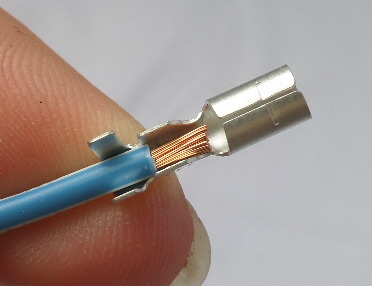
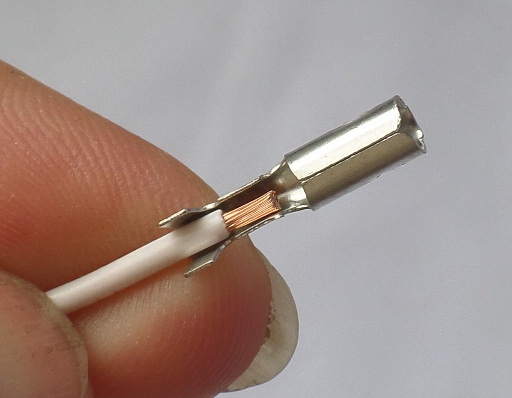

Following datasheet curves is the best way, of course, but a practical way is to build a bias test box, you wire a socket so plate goes to some suitable +V , say 150V, through a suitable load resistor, say switch selectable 22/33/47/68/100k , and a range of possible cathode bias resistors, say 470/1k/2k2/4k7/10k ohms .
Grid grounded through a 220k resistor.
Then you select a combination which gives you around 80/100V at the plate.
In 2 minutes you find best plate/cathode resistors to bias and load your stage, write that on tube itself (or a piece of paper tape).
If you want to find gain, feed 100mV 440 or 1k Hz to its grid, measure Audio voltage at plate, do the Math.
Try tube both with and without cathode bypass capacitor , say 22uF x 25 or 50V .
Once you measured all and wrote real measured specs on some kind of table, use them as you see fit.
95% of tubes become usable this way, and remember, "a tube is a tube" .
I´ll repost this with the schematic and a couple practical examples.
More than the tubes, your problem will be the sockets; octal and noval are easily available; old weird ones (locktal, A Technique, even 7 pin ) are hard to find.
Maybe you can get an old junk BW Tube TV from the attic and pull all sockets, also lots of high quality polyester caps .
Forget the Electrolytics.
If you can not get sockets, find spare crimpable female connectors usually for ribbon cable assemblies which fit tube pins, wire them and use thermofitting plastic tubes to insulate and protect them.

Last edited:
These tubes in your list look like they -could- be used for audio. Some are quite obscure, intended for IF, RF or TV. Can you get replacements or extras, before building something?
6AH6 6BQ7 6BL8 6CH6 6CM7 6BX6(similar to 6AU6) 6EM7 6CB6/A 6EA8 6EW6 6HG8 6JW8
https://frank.pocnet.net/sheets/184/6/6CH6.pdf
I would suggest looking through the $1 list, below, for tubes that are useful and more plentiful. Like: 6JC6 6HB6 6BN11 6AG9 6DK6 6CM7 [ 6LY8 6JV8 6KV8 6KR8 6HZ8 6JT8 ] 6GF5 12/13DR7 ...
and for power tubes: 26DQ5 for $3, 6CB5A or 6EX6 for $5, 6HJ5 or 21LG6 for $4, 12JN6 or 12GT5 for $3, 6JN6 or 6GE5 for $6, .....
and 12HL7 $4 (pentode or triode driver tube), (triode curves below)
$1 List: Summer Dollar Days - Vacuum Tube Sale - $1.00 Vacuum Tubes
..
6AH6 6BQ7 6BL8 6CH6 6CM7 6BX6(similar to 6AU6) 6EM7 6CB6/A 6EA8 6EW6 6HG8 6JW8
https://frank.pocnet.net/sheets/184/6/6CH6.pdf
I would suggest looking through the $1 list, below, for tubes that are useful and more plentiful. Like: 6JC6 6HB6 6BN11 6AG9 6DK6 6CM7 [ 6LY8 6JV8 6KV8 6KR8 6HZ8 6JT8 ] 6GF5 12/13DR7 ...
and for power tubes: 26DQ5 for $3, 6CB5A or 6EX6 for $5, 6HJ5 or 21LG6 for $4, 12JN6 or 12GT5 for $3, 6JN6 or 6GE5 for $6, .....
and 12HL7 $4 (pentode or triode driver tube), (triode curves below)
$1 List: Summer Dollar Days - Vacuum Tube Sale - $1.00 Vacuum Tubes
..
Attachments
Last edited:
But wait - there's more!
Ey88 *5
6cg7 * 8
6eb8 * 3
6bv7 * 2
1s2 * 2
And assorted singles.
Cheers for the suggestions everyone! I'm thinking I can just mount a few sockets on an ally plate and then have a play. Most seem to have noval (?) And octal pinouts so I can whip up a play surface pretty easily.
I also have a few high voltage transformers of various types as well as a 200va 12v torroid, so I guess that's the heater supplies and ht covered off.
Does anyone have a good link to an adjustable regulated ht supply? I can whip something easily enough Id say.
Thanks again!
Ey88 *5
6cg7 * 8
6eb8 * 3
6bv7 * 2
1s2 * 2
And assorted singles.
Cheers for the suggestions everyone! I'm thinking I can just mount a few sockets on an ally plate and then have a play. Most seem to have noval (?) And octal pinouts so I can whip up a play surface pretty easily.
I also have a few high voltage transformers of various types as well as a 200va 12v torroid, so I guess that's the heater supplies and ht covered off.
Does anyone have a good link to an adjustable regulated ht supply? I can whip something easily enough Id say.
Thanks again!
The triodes in the 6CG7 are "identical" to those in the revered 6SN7. That triode is up to HIFI standards, without NFB. 😀 Make sure you treat those "puppies" with the greatest of care.
While most definitely not an early project, the 6CG7s would be excellent in a Williamson style PP amp using either 6L6GC or KT88 "finals". When you finally build a Williamson, good O/P "iron" is essential. The attached Heath schematic illustrates what Williamson style topology looks like.
While most definitely not an early project, the 6CG7s would be excellent in a Williamson style PP amp using either 6L6GC or KT88 "finals". When you finally build a Williamson, good O/P "iron" is essential. The attached Heath schematic illustrates what Williamson style topology looks like.
Attachments
Attachments
Last edited:
Hey, that's good to know about the 6cg7 (and who doesn't like to feel they got a good deal 🙂 ) and noted on the amp suggested. If I follow, it's a triode amp, followed by a splitter, triode driver to pentode output? Ul tap on the transformer. I don't quite get the bias setting on the outputs though.
Cheers for the power supply links. Much appreciated!
Cheers for the power supply links. Much appreciated!
Hey, that's good to know about the 6cg7 (and who doesn't like to feel they got a good deal 🙂 ) and noted on the amp suggested. If I follow, it's a triode amp, followed by a splitter, triode driver to pentode output? Ul tap on the transformer. I don't quite get the bias setting on the outputs though.
Cheers for the power supply links. Much appreciated!
Williamson topology is voltage amplifier DC coupled to "concertina" phase splitter, followed by a differential gain block, and on to the "finals".
The Heath W5M employs self biased "finals", which accounts for the "tall" B+ rail. "Fixed" bias O/P tubes can also be employed.
Examine the setup for phase shifts and you will see why "bargain basement" O/P "iron" is not a good idea. Combine the RC pole shifts with a shift in the O/P trafo and the Barkhausen criterion for oscillation is satisfied. 😡 It is necessary to spread the RC pole "corner" frequencies out and use good O/P "iron". Low frequency instability is the "Achilles Heel" of Williamson style circuitry and prophylaxis is absolute essential. Why bother with Williamson, given its weakness? Williamson style topology is incredibly linear/good sounding, which makes it a "classic".
Just a heads-up for the original poster:
A couple of the types you list are 10 pin types, so they are unlikely to be of use and are easily confused with 9-pin ones.
The tubes you list with a "1" at the start of the type number are TV diodes and are pretty much useless.
A couple of the types you list are 10 pin types, so they are unlikely to be of use and are easily confused with 9-pin ones.
The tubes you list with a "1" at the start of the type number are TV diodes and are pretty much useless.
6BV7 a 10 WAtt pentode:
https://frank.pocnet.net/sheets/084/6/6BV7_AWV.pdf
https://frank.pocnet.net/sheets/184/6/6CH6.pdf
https://frank.pocnet.net/sheets/093/6/6CG7.pdf
Now you need (for building an amplifier) an output xfmr, 9000 Ohm P-P, 8 Watt OT for pentode, or 5000 Ohm P-P, 2 Watt OT for triode mode. And a 250 V B+ power supply. Unless you get some bigger output tubes. (a lower P-P Zprimary then)
A lower Zprimary OT will more likely work for a Williamson design.
A pair of 26DQ5, 6HJ5, 6EX6, 21LG6 or 6CB5A would work with a 3300 Ohm P-P Zprimary and around 350V to 450V B+. ($3 to $5 each and 50 to 75 Watts output possible)
(or 25 to 40 Watts output with 6JN6, 12JN6, 12GT5, 12GE5 $3 to $6 each)
A Mullard type design would be easier though. Fewer tubes and less Neg. feedback/bandwidth issues with the OT. I would start with this type.
.
https://frank.pocnet.net/sheets/084/6/6BV7_AWV.pdf
https://frank.pocnet.net/sheets/184/6/6CH6.pdf
https://frank.pocnet.net/sheets/093/6/6CG7.pdf
Now you need (for building an amplifier) an output xfmr, 9000 Ohm P-P, 8 Watt OT for pentode, or 5000 Ohm P-P, 2 Watt OT for triode mode. And a 250 V B+ power supply. Unless you get some bigger output tubes. (a lower P-P Zprimary then)
A lower Zprimary OT will more likely work for a Williamson design.
A pair of 26DQ5, 6HJ5, 6EX6, 21LG6 or 6CB5A would work with a 3300 Ohm P-P Zprimary and around 350V to 450V B+. ($3 to $5 each and 50 to 75 Watts output possible)
(or 25 to 40 Watts output with 6JN6, 12JN6, 12GT5, 12GE5 $3 to $6 each)
A Mullard type design would be easier though. Fewer tubes and less Neg. feedback/bandwidth issues with the OT. I would start with this type.
.
Last edited:
A Mullard 5-10 amplifier design:
(could be further simplified with an LND-150 Concertina splitter, SS rectifiers or just buy a bench power supply)
(could be further simplified with an LND-150 Concertina splitter, SS rectifiers or just buy a bench power supply)
Attachments
Last edited:
For a learning amplifier, I would start out with a Mullard 5-10 like design, simplified down to an LND-150 for the input pentode, and another LND-150 for a Concertina type phase splitter. Or start with a Single Ended (SE) design.
Build each section (input, splitter, output/OT) on a separate mini-bread-board, so that the sections can be substituted with alternative tube designs. You will want a variable power supply eventually, so just buy something cheap off Ebay.
The LND-150 is a depletion mode Mosfet with gate protection and very low capacitances. Ideal for substituting in place of small pentodes. 500V rated.
http://ww1.microchip.com/downloads/en/DeviceDoc/LND150 C041114.pdf
Build each section (input, splitter, output/OT) on a separate mini-bread-board, so that the sections can be substituted with alternative tube designs. You will want a variable power supply eventually, so just buy something cheap off Ebay.
The LND-150 is a depletion mode Mosfet with gate protection and very low capacitances. Ideal for substituting in place of small pentodes. 500V rated.
http://ww1.microchip.com/downloads/en/DeviceDoc/LND150 C041114.pdf
A Mullard type design would be easier though. Fewer tubes and less Neg. feedback/bandwidth issues with the OT. I would start with this type.
Agreed. Mullard style circuitry is more tolerant of mediocre O/P "iron" and less prone towards instability than Williamson. OTOH, Williamson is more linear. Compromises are forever with us. Like it or not, TANSTAAFL "rules".
FWIW, a description of Mullard style is voltage amplifier DC coupled to LTP (long tailed pair), AKA differential, phase splitter and on to the "finals". Like Williamson, Mullard style is "classic".
Hi again all! Just wanted to say thanks to everyone for taking the time to comment. I've splurged on a cheap set of 6l6gc's as well with a view to making a power amp at some point using all the detritus that I've got lying about. I'll no doubt be back to get some input on a good design to play with. But for now wanted to say 'cheers!'
And in the name of getting started on a cheap build, what sort of plate to plate impedance does a pair of 6l6gc's want?
And in the name of getting started on a cheap build, what sort of plate to plate impedance does a pair of 6l6gc's want?
- Status
- Not open for further replies.
- Home
- Amplifiers
- Tubes / Valves
- Small tube stash - whats useful?
